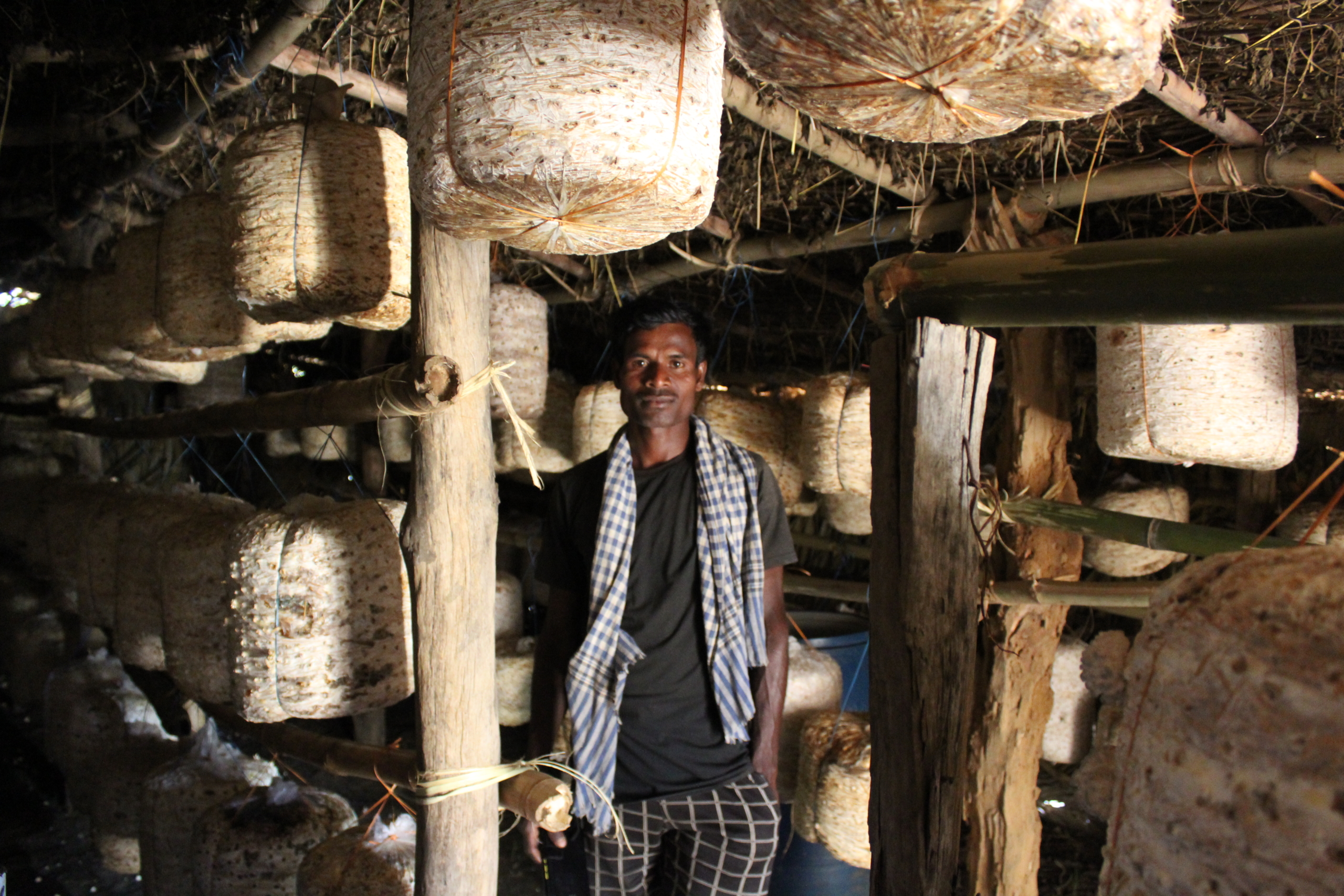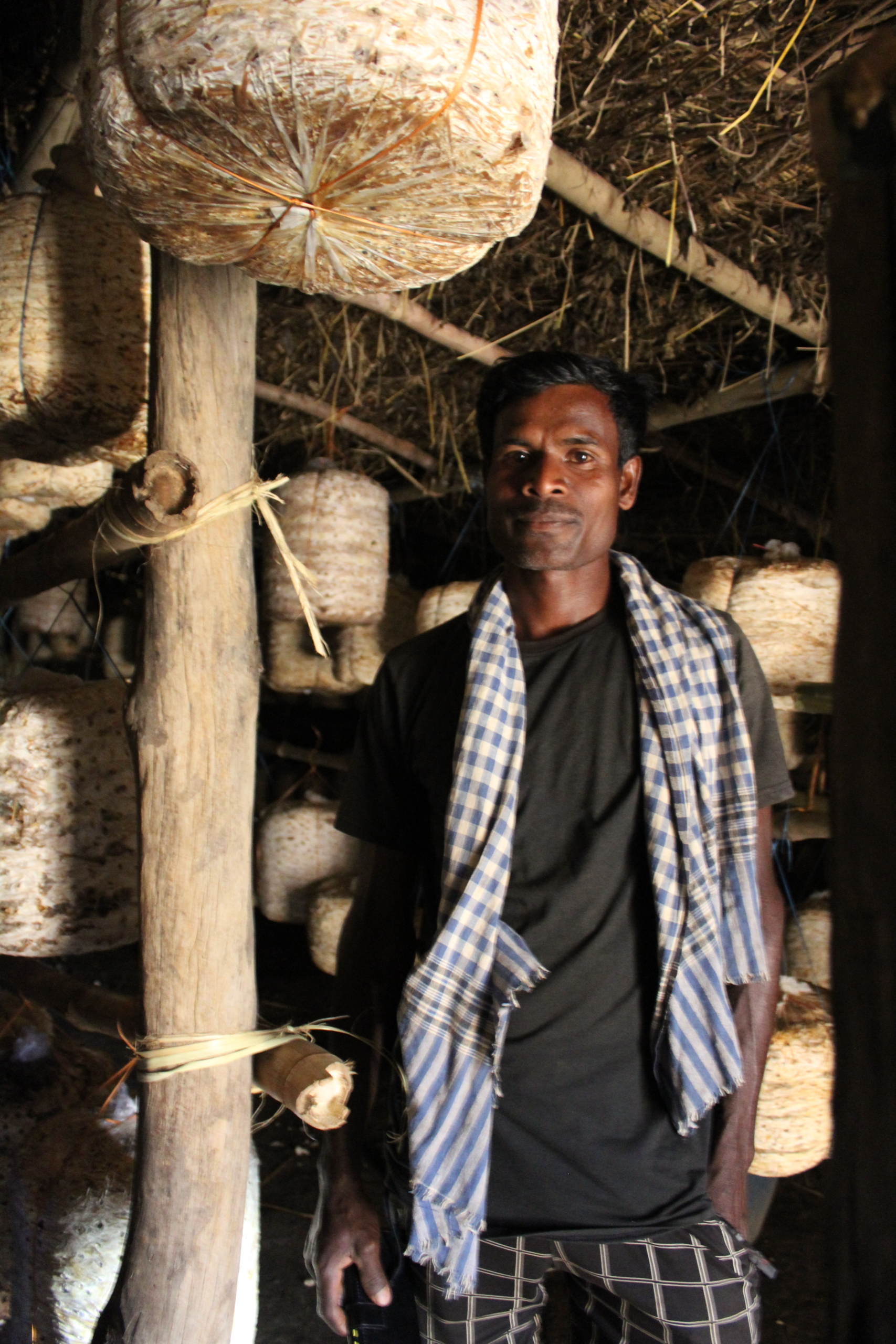If you Google ‘the ideal temperature for mushroom growth’ you might probably find an average temperature ranging from 17-18 degrees Celsius with maximum going up to 25 degrees.
But here at Malkangiri, where the average temperature in summers can go up to 47°C, Guru Macha has a unique story to tell.
Idea Incepted During Trainings
Once a Community Resource Person for WHH project in Malkangiri, Guru Macha received multiple trainings on Sustainable Integrated Farming approach and learnt various methods of income diversification. He was also part of numerous trainings given by local government on sustainable farming.
“For me the idea came in 2016 when I went for one of the trainings on mushroom cultivation. A local indigenous variety. Enthusiasm kicked in,” says Guru, belonging to the tribal community of Malkangiri.
A 20-feet hut walled up with straw (like hay) on all four sides and pitch dark from the inside, maintaining an ideal temperature of 20°C – an ideal temperature for growing a more resilient local mushroom variety ‘dhinga’. Stepping inside from 38 degrees felt like a cool breeze of refreshment. Wheat straws in good density is a cheaper alternative in providing high thermal insulation and cooling solutions.

The next thing you will notice inside are the plastic bags hung from the three-tiered bamboo rows, with mushroom shoots opposing out of the bags. The same bags are stuffed with straw used to create the walls too.
“That is all what’s needed to do mushroom cultivation. A packet of locally available mushroom and straw from farms. We just need to be trained properly,” he says with a smile.
It is hard to believe mushrooms growing in extraordinarily hot temperatures. And it also tells the tale of a model farmer.
Simple, Profitable, Proteins
“As a CRP, I started understanding the science behind agriculture. I even laughed at the idea of mushroom cultivation in the beginning. How can this be achieved in such a high temperature? When you understand the rational and methods, you start believing in it. I am glad I joined the project, otherwise I wouldn’t have dared it,” says Guru.

Guru Macha is the only farmer in his village to successfully implement this mushroom farming and is earning a good profit each season. Mushrooms give Guru a net profit of Rs 45,000 per season with only Rs 5,000 as its input cost. Other than the mushroom cultivation, Guru Macha has emerged as one of the model farmers who is using integrated approaches of farming and water management through drip irrigation to encourage farmers to learn from him.
“Once the bags stop producing mushroom, I have to start the process again in winters. Monsoons are not the ideal season as straw remains wet. Regular maintenance of the hut is needed. Maybe, this is the reason why other farmers don’t want to invest their time and effort in maintenance,” he says.
Mushrooms are a natural source of protein. And Guru Macha cannot be more than thankful that he and his family can consume in their daily diet. “Also, the fact how important it is to have a dietary diversification. Through my own farm, we manage to eat green leafy vegetable to millets to mushroom. We consume first and sell later. I of course cultivate paddy too as a safe measure,” says Guru.

Guru Macha’s journey from Community Resource Person training farmers to becoming a Model Farmer himself has been that of huge knowledge transfer. With so much of experience at hand, Macha now wants to expand his mushroom cultivation and train new farmers in leashing the potential of it.




